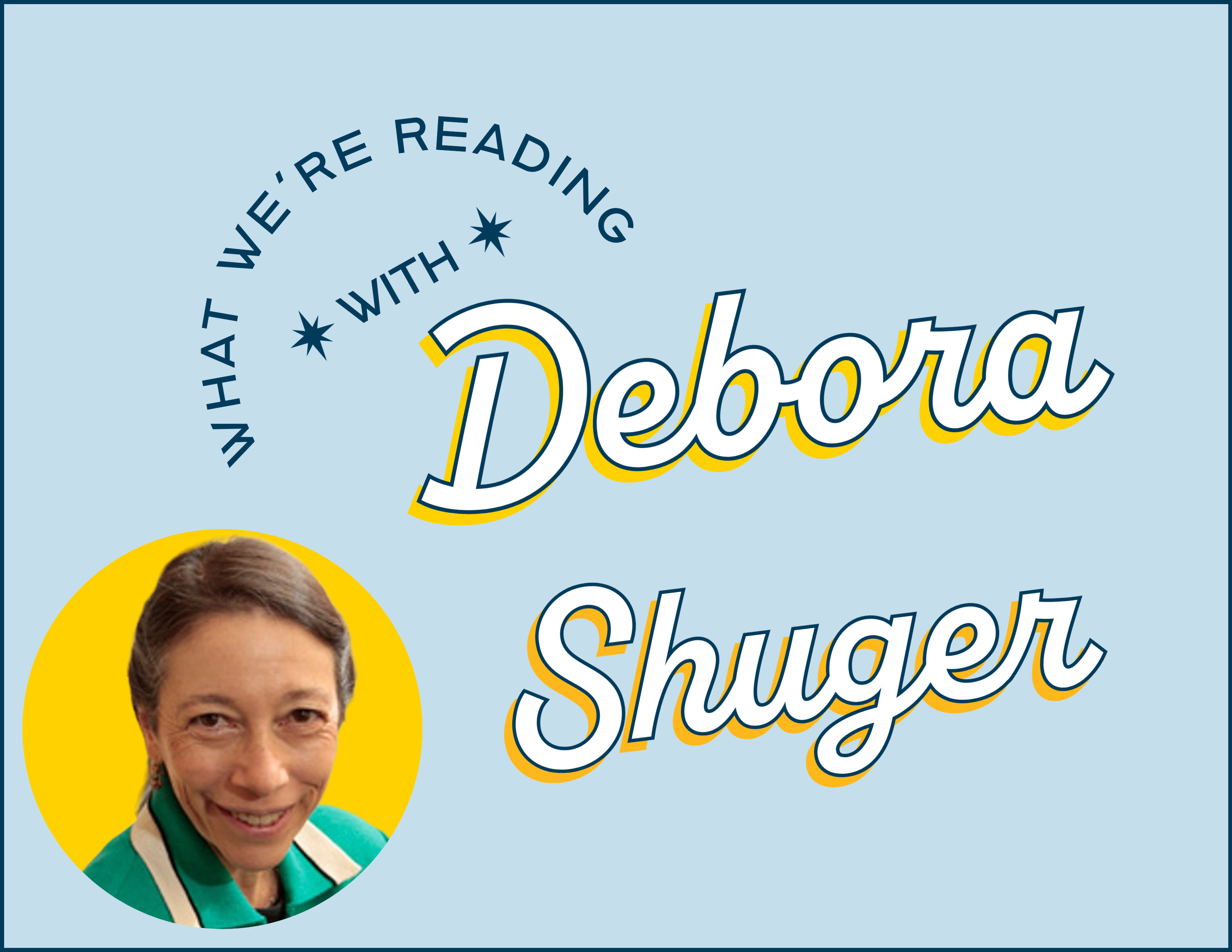What We’re Reading with Debora Shuger

Professor Shuger’s new book, Paratexts of the English Bible, 1525-1611 (Oxford, 2022), is available now through Oxford University Press. We caught up with Professor Shuger to discuss how her new work came about.
Can you tell us a little bit about your book?
Early modern English bibles (and there are hundreds of editions, although only a handful of translations) typically include a whole swathe of paratexts: woodcuts, some of them absolutely splendid; prefaces to the bible as a whole and to individual books; tables treating chronology and various chronological cruxes; marginal notes on matters of doctrine, historical context, manuscript variants, and translation issues; genealogical charts; inset essays on predestination, the sacraments, Israelite history, the Apocrypha, etc. . . . No one had ever studied any of this material. There are plenty of books on the history of the English bible prior to the King James, but they deal only with the half-dozen or so translations, and also tend to assume that editions using the same translation (e.g., that of the Geneva Bible or Tyndale’s New Testament) will be more or less the same—indeed, more or less identical to the first edition: the edition most sought by book collectors, and hence the one most likely to make its way into major research libraries like the Folger and Huntington. However, it turns out that different editions of the same translation often have wildly different paratexts. So, for example, the 1560 Geneva (the first edition) is an unequivocally and militantly Calvinist bible; however, although the translation remains unchanged, Genevas printed after 1582 are no longer militant. Indeed 45% shed not only their militancy but their Calvinism as well. Since from 1578 to 1611 the Geneva—that is, the Geneva translation–was far and away the most popular English bible, the changes to key paratexts are of no little significance.

How did you become interested in researching the history of the English bible?
I came across the prefaces in the course of a different study and was amazed that they were unfamiliar to me and, apparently, to everyone else in the field as well. They’re both surprisingly early and lucid formulations of what became the distinctive strains of English churchmanship, Catholic and Protestant. Indeed, I tried to address this in the book’s opening paragraph, and probably said it better there, so let me quote my own words: “I had run across the prefaces to the major Elizabethan bibles while researching an earlier project and been astonished that I had never encountered these before, since they presented crystal-clear formulations of confessional identity—and with respect not only to doctrine but also to less tangible qualities of tone, style, and habits of thought. A bit of further digging revealed that these prefaces had garnered barely a passing mention in the scholarship. Yet these are brief, vernacular pieces, and the Protestant ones must have been among the most accessible texts in Elizabethan England. Moreover, since the Geneva and Bishops’ Bibles come out within the first decade of Elizabeth’s reign—the Geneva in 1560, the Bishops’ in 1568—their prefaces point to the very early crystallization of both Calvinist and Anglican confessional identity, which is, to put it mildly, a surprise. In current scholarship, “Anglicanism,” in the sense of a self-consciously distinct type of Christianity, dates from the Restoration; while English Calvinism, especially the more intransigent and oppositional variety, tends to be seen as a mid-Elizabethan phenomenon, an equal-and-opposite reaction to authoritarian crack-downs by the conformist establishment. Since the prefaces bear out neither of these narratives, they have, potentially at least, major significance for our understanding of the English post-Reformation. And some of them are powerful, intelligent pieces.”
What was the process like doing research for this book?
Doing research for this book involved hourly silent outpourings of gratitude for the Internet. The English paratexts have multiple sources: medieval Latin bibles, a half-dozen Greek-Latin New Testaments printed in Geneva, a couple of Latin Zurich bibles, 12th century manuscript genealogies of Christ, a 9th century Jewish chronicle history, Calvin’s Gospel harmony, a French Catholic-humanist two-page summary of the bible’s essential teachings, woodcuts from Continental picture bibles, etc. Had I not had electronic access to these, and to dozens upon dozens of English bible editions, the book could not have been written, at least not without a lifetime of research in libraries across the US and Europe.
How did you become interested in this type of scholarship?
I have always liked digging in terrain where no scholar has searched before. One can’t know in advance where those overlooked sites are (precisely because they’re not yet on any maps), but when I found myself in a virgin forest of biblical paratexts, I reached at once for a shovel to check out their roots and see if treasure might lie concealed beneath the surface.
